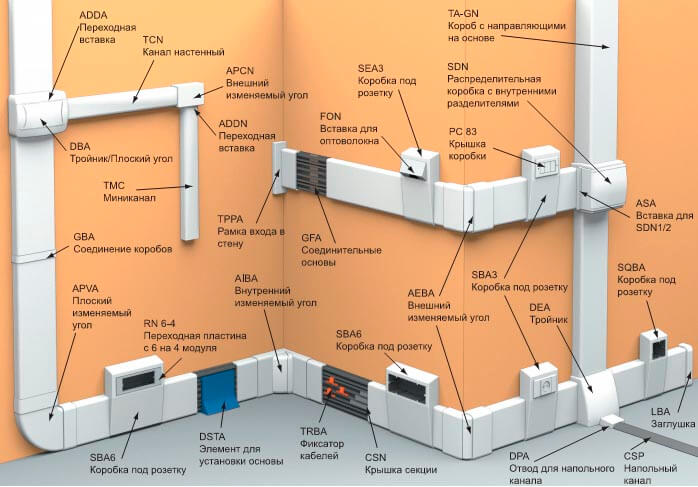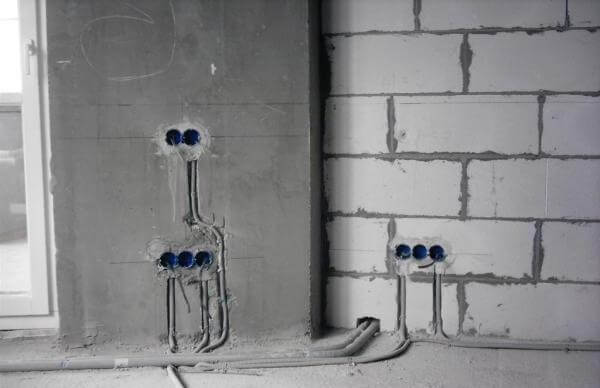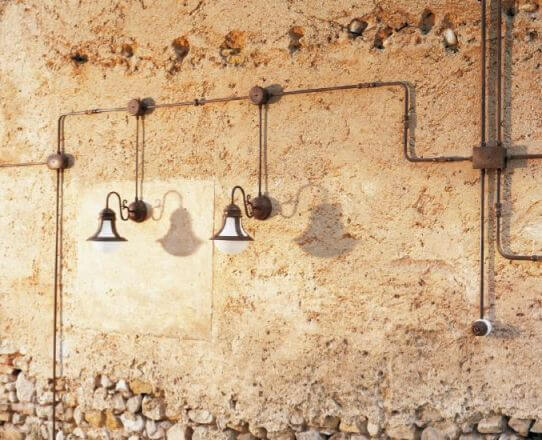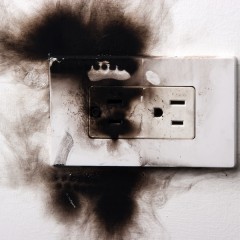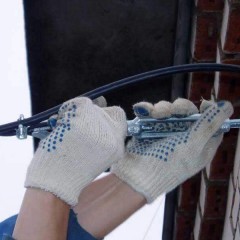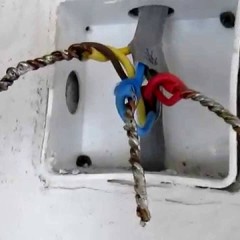What types of wiring are there?
General classification
So, roughly speaking, the electrical wiring is divided into the following types:
- open (cable lines are mounted on the surface of walls, ceiling or other building structures);
- hidden (the power grid is laid inside these same structures);
- outdoor (this type of wiring is used exclusively on the street, wires are attached to the surface of buildings or between special supports).
In turn, each of the listed laying methods has its own varieties, which we will talk about in more detail now.
Open
With open electrical wiring, the following cable routing methods are used:
- in a special electrical plinth;
- in cable channels;
- in trays;
- on insulators or porcelain rollers;
- on brackets;
- in pipes (including corrugated and metal hose).
Advantages and disadvantages of open wiring we reviewed in the corresponding article on the site, which we strongly recommend that you read.
Hidden
Performing a hidden type of wiring is carried out in the following ways:
- in the gates under the plaster (the most popular option);
- in technological openings of building structures (for example, in panels of old apartment buildings);
- under stretch and false ceilings;
- under plastic panels;
- in cable ducts, corrugation, metal hose, placed inside the structures;
- in the floor.
ABOUT advantages of hidden wiring we also told in the corresponding article.
Outdoor
Well, the last of the main types of wiring is outdoor. As we already said, this is a street version of the cable line layout, which can be performed in the following ways:
- on the surface of buildings and structures;
- air laying between supports (cable wiring or string);
- underground (so-called hidden street view of wiring).
Outdoor wiring is used when installing street lighting, electrifying garden buildings (including a garage), and also in order to conduct light in the attic.
What other varieties exist
In addition to the main classification, there is an even more local one, which you should also be aware of. So, firstly, there are two more types of wiring: single-phase (220 volts) and three-phase (380 volts). With this, hopefully, everything is clear.
In addition, there is a two-wire wiring (without earth) and with grounding (three cores). Here we additionally recommend that you read the article on what types of grounding are.
Well, the most interesting thing that we would like to tell you about is what types of electrical wiring exist in terms of design, starting from the input shield. Here the wiring can be divided into such options:
- Closed ring. As can be seen from the diagram below, a closed circuit supplies an unlimited number of outlets within the same apartment or house. An important requirement for this type of electrical wiring is that the floor area should not be higher than 100 square meters.
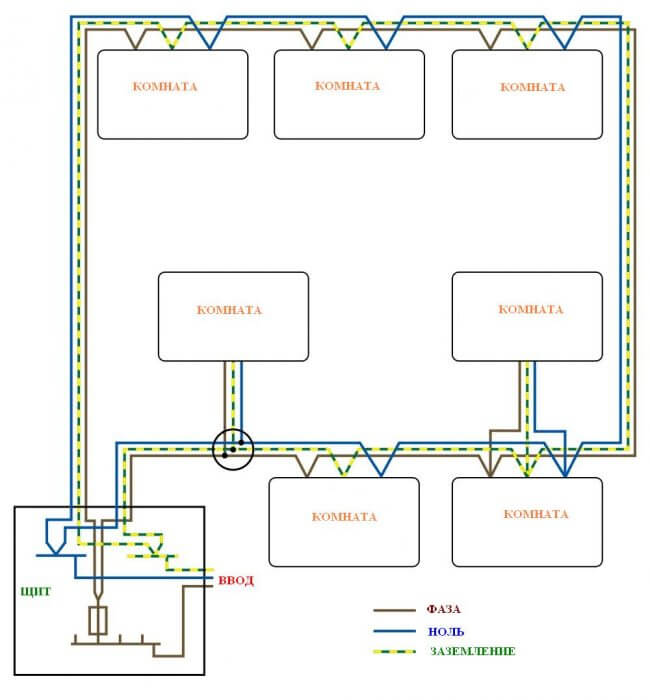
- Radial. In this case, a separate cable is routed to each individual appliance and group of outlets, the circuit does not return back to the switchboard, which is more expedient and safe.
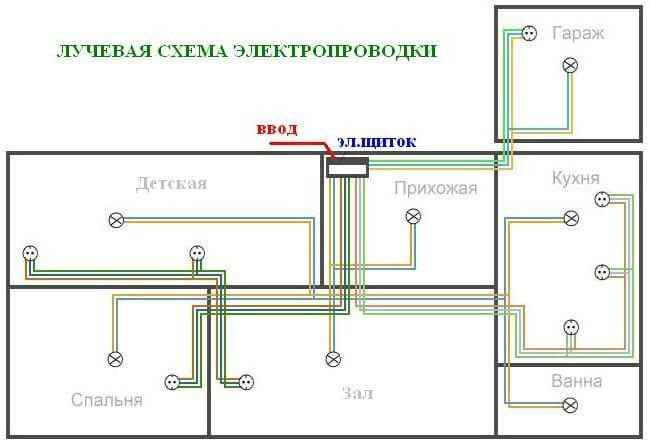
- Loopback. Cable laying is carried out to one electric point, from which power is subsequently transferred to the neighboring one, until the whole group becomes a single whole.
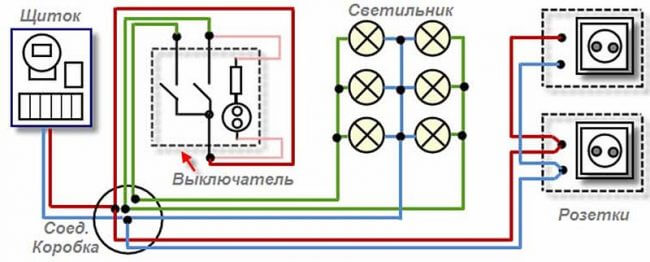
- Dose box. From the shield there is a cable for each dose box placed between the ceiling beams. In turn, from these boxes, one wire goes to the light switch and one directly to the cartridge.
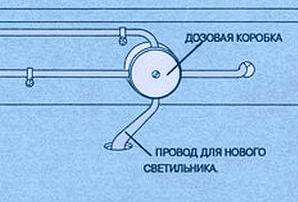
These types of wiring were used (are) in industrial and civil buildings. To choose the appropriate method of laying the cable, you need to be guided PUE. In addition, the choice is made depending on environmental conditions, which is no less important. For example, in the attic rooms you need to take care of the reliable protection of the cable from moisture, and in a wooden house - from fire.
Finally, we recommend watching a short but useful video on a topic that examines the scope, purpose and characteristics of the main types of electrical wiring used in residential premises:
So we examined the existing types of wiring and methods for laying them in residential buildings. As you can see, each embodiment has its own characteristics and device. We hope the information was useful to you!
Also read:

